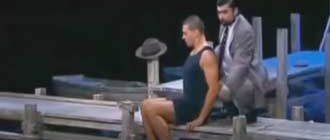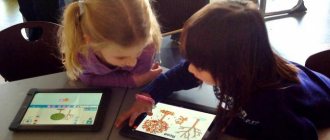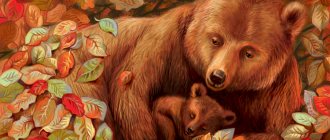Summary of GCD for familiarizing yourself with the outside world
Summary of a lesson on familiarization with nature in the senior group, topic: “Migratory birds”
Author of the lesson: teacher of the highest category Sorokina A.M., Tolyatti.
Goals:
1. Introduce children to the concepts: “flying in a wedge”, “chain”, “flock”. 2. Expand and consolidate children’s ideas about migratory birds: stork, cuckoo, nightingale; about the body parts of birds. 3. Exercise children: - in the formation of complex adjectives; - in composing complex sentences. 4. Cultivate in children a kind attitude towards all living things in nature.
Equipment:
Illustrations of migratory birds, audio recordings of bird voices and singing.
Preliminary work:
Bird watching while walking; reading poetry, stories about birds.
Progress of the lesson:
1. The teacher reads a poem by A. Pleshcheev:
Boring picture! The clouds are endless, The rain keeps pouring down, Puddles by the porch,
Stunted rowan gets wet under the window; The village looks like a gray blur.
Why are you visiting us early, Autumn? The heart also asks for Light and warmth.
— Guys, please tell me what time of year the poem is talking about? /About autumn/
— Please name the characteristic signs of autumn? /The foliage turns yellow, it drizzles, the birds fly away/. —What are the names of the birds that fly to warmer regions and those that stay? /Migratory and wintering/. - Name the migratory birds? /Swallow, woodpecker, rook, heron, crane, starling, lark/. — Please guess the riddles:
1. This bird never builds nests for chicks. /Cuckoo/
- Listen, please, to how the cuckoo calls. /audio recording/. Guess the next riddle.
2. Under the roof I make a nest out of lumps of clay. For the chicks I put a downy feather bed on the bottom. /Swallow/ /audio recording starts/
3. This is an old friend of ours: He lives on the roof of the house - Long-legged, long-nosed, Long-necked, voiceless. He flies to the swamp to hunt for frogs. /Stork/ /audio recording/
- You guessed correctly, these birds are also migratory. The nightingale is a small bird with brown plumage, a small beak, tail and legs. The cuckoo is a small bird, but larger than the nightingale, has a variegated color, a long tail, and a small beak. The cuckoo, unlike other birds, never makes nests, but lays its eggs in other people's nests, so the birds are forced to hatch and raise cuckoo chicks. The stork is a large white bird with a large beak. — Please name the body parts of birds. /torso, head, tail, beak/. - All birds have the same structure, but people call them differently, how do they distinguish them? /By plumage, appearance, size/ - Guys, why do birds fly to warmer climes? /Because it gets cold here, there are no insects in winter/. - How do they find their way to the south and back here? /we don’t know/. It turns out that some birds fly away at night, others during the day. But before the flight, they make test flights, eat more than usual, put on fat - there is nowhere for them to eat during the flight. In flight, they are guided by the stars, and if the sky is overcast and the stars are not visible, then they are guided by the magnetic oscillations of the Earth. Have you noticed that some birds fly away in “flocks”, all together; some, for example, cranes, line up in a “wedge” in the form of a triangle; others line up in a “chain”, in one line. It probably depends on the habits of the birds: some birds need leaders who show the way.
Physical exercise “Birds”
/fingers of both hands bend/
Sing along, sing along, Ten birds are a flock, This bird is a sparrow, This bird is an owl, A sleepy little head. This bird is a waxwing, This bird is a corncrake, This bird is a starling, A gray feather. This one is a finch, This one is a swift, This one is a cheerful siskin. Well, this one is an angry eagle, Birds, birds, go home. /hands behind back/
Exercise “Guess and sit down”
- Guys, now I will name migratory and wintering birds, if you hear the name of a wintering bird, then sit down; and if the name is migratory, then wave your hands. Crow, nightingale, woodpecker, magpie, dove, swallow, tit, rook, starling, bullfinch, stork, crane, sparrow, heron, etc.
Exercise “Say in one word”
- Guys, please stand in a circle. I will throw the ball to you, and you will return it to me with an answer.
The stork has long legs, what is it like? ... /long-legged/. The stork has a long beak, it is... /long-billed/. The swallow has a long tail, it is... /long-tailed/. The swallow loves warmth, she is ... /heat-loving/. The swallow has sharp wings, it is... /sharp-winged/. The nightingale has a ringing voice, he... /clear-voiced/.etc.
Exercise “Continue the sentence, find the reason”
Birds that feed on insects are the first to fly south in the fall, because... /insects are hiding and they have nothing to eat/. The woodpecker can be called a forest doctor because .../he takes out bugs and insects from under the bark/. The cuckoo does not hatch its chicks because .../it does not build its own nests/. All people love to listen to the nightingale, because .../he sings beautifully, bursts into song/. etc. In the spring, migratory birds fly back because... /they need to hatch their chicks/.
Lesson Analysis:
— Guys, please tell me what we talked about in class today? — What new migratory birds did you learn about? — What interesting things did we learn about the cuckoo? - How do they find their way to warmer regions and back to us? — Guys, I liked the way you worked in class: you listened carefully, thought, and answered in complete sentences. Well done! I give prizes to the most active guys.
Download lesson notes “Migratory Birds”
Preview:
Municipal budget preschool institution
kindergarten No. 2 Neverkino
Lesson summary on the topic:
“Where there is water, there is life”
(acquaintance with the surrounding world
children of senior preschool age).
- Introduce children to the properties of water (taste, color, fluidity).
- Develop children's curiosity, thinking and speech; introduce the following words into the children's active dictionary: liquid, colorless, tasteless, transparent.
- Give an idea of the importance of water in human life and in nature.
- Foster respect for water.
Equipment: audio recording of surf noise; photographs of desert and forest; water in glasses; teaspoons; salt, sugar, milk; flannelograph, planar model of a river, streams, a person.
Children enter the hall and sit on chairs.
Educator: Children, look what I have in my hands?
Educator: Correct. What do you think the globe is a model of?
Educator: That’s right, this is a model of our planet earth. Tell me what color is the water? And what kind of land? What is more: sushi or water?
Educator: That's right - water.
Educator: Today we are going on a trip. And, since we have to sail along the river, let's choose some type of water transport. What types of water transport do you know? What will we choose? (children's answers: steamship, boat, yacht, cutter, catamaran, etc.) Close your eyes and listen to the water splashing overboard. A journey with several stops awaits us, and here is the first pier. We will stop and remember what we know about water.
1. Marina “Where there is water, there is life”
- What do we use water for every day?
- Why do you need to water indoor plants?
- How many days do you think a person can live without water?
Every living thing, including plants and animals, needs water. Without her, everything dies. For example, a person can live without water for only a few days (from three to seven). Take a look at these two pictures. This is what a desert looks like without water, but this is what the banks of a river or lake look like. (Show pictures.) Well, let's go further, another stop awaits us around the next bend in the river.
2. Pier “Where did the water come to us from?”
Listen to the droplet's story.
Educator: Once upon a time there was a small stream. He ran among forests and meadows. On the way, he met a stranger who was very similar to him.
“Who are you?” he asks.
- I am a trickle. And who are you?
“And I am a stream,” our stream answers. “Let’s be friends and flow on together.” Thus, the waters of many streams merged into one large and beautiful river. It rolls its waters for many kilometers, generously giving water to people along the way. A Man came to the river, admired its clear waters and asked the river to share its gifts. Man installed pumps to pump water from the river and supply it to the water supply system. But no matter how clean the water seemed to Man, grains of sand, particles of silt, and dirt still remained in it. In order to get rid of these “fellow travelers” of water, Man had to build treatment facilities and only after purification send the water on its further journey – to our water taps. This is how I, Droplet, came to you.
A droplet makes such a long and difficult journey, and it becomes precious because it costs a person dearly.
(during the teacher’s words, a river modeling is carried out).
Educator: How is a river born, do you want to know?
(places a wide and long strip of blue paper in front of the children).
The teacher conducts an experiment in water purification (experimental activity).
Educator: Let's try to clean the dirty water together. To do this, take a funnel, put a special filter cloth (made of cotton wool and gauze) into it and start passing dirty water through this funnel. Let's see what we can do?
We will conduct an experiment
We'll find clean water.
We will not allow dirt to pass through the filter,
So they can drink water!
Conclusion: after purification, the water became clean, but it is still not drinkable. It must be boiled and only then will it be suitable for drinking.
Educator: Yes, we cannot live without clean water. We only need clean water! Who else needs fresh water while reading?
Pier "Dance with Cloud"
Educator: A cloud has appeared on the horizon, let's look through our binoculars (children use their hands to make binoculars). Do you see the cloud?
Educator: What does a cloud consist of?
-From droplets of water.
Educator: Do you want to turn into droplets? One, two, three little bits of life.
A dance game is held with children.
Educator: Well, a cloud passed, gave everyone water to drink, nature came to life, and you and I continue our journey.
We stopped and now let’s get to know the water better and do several experiments with it.
Experience No. 1. "Water is a liquid"
Educator: Water is a liquid. It can be poured into anything: a glass, a bucket, a vase. It can be poured, poured from one vessel to another.
Experiment No. 2 “Colorless water”
On the teacher’s table there is a glass of water, a glass of milk, and a spoon.
Teacher: (dips spoon into milk) Guys, can you see the spoon? ( No ) . (puts the spoon in the water) Can you see the spoon now? (Yes).
Educator: What color is the milk? (white) What color is the water? (water has no color, water is colorless).
Experiment No. 3 “Water without taste”
Educator: And now I suggest you guys taste the water. What is she like? Sweet? Salty? Sour? Bitter?
Educator: Water has no taste, it is tasteless. Let's do a little experiment. Let's put the substance that is on our table in a glass of water. Stir and now taste the water. What did it taste like? (children's answers). What do you think I added to the water? (children's answers). It turns out that water can take on the taste of the substance that is put in it.
Today you learned a lot about water. Let's recap what you learned:
Water is a liquid.
Educator: Guys, do you need to save water? Why? (children's answers)
Lesson conclusion: For washing and cooking, only purified water is needed. And to get clean water, people spend a lot of work and effort. This is why you need to conserve water and close the tap tightly.
Source



